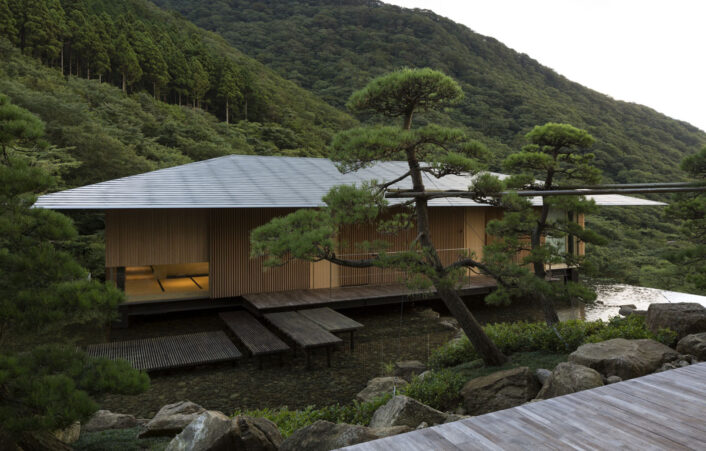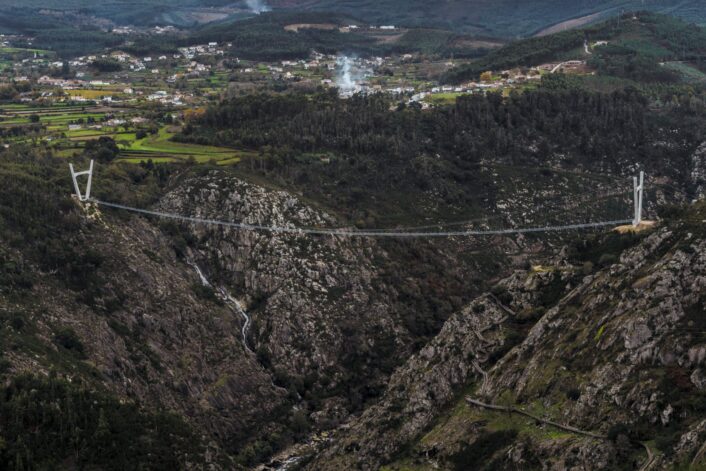Architecture
Kengo Kuma rebuilds bridge
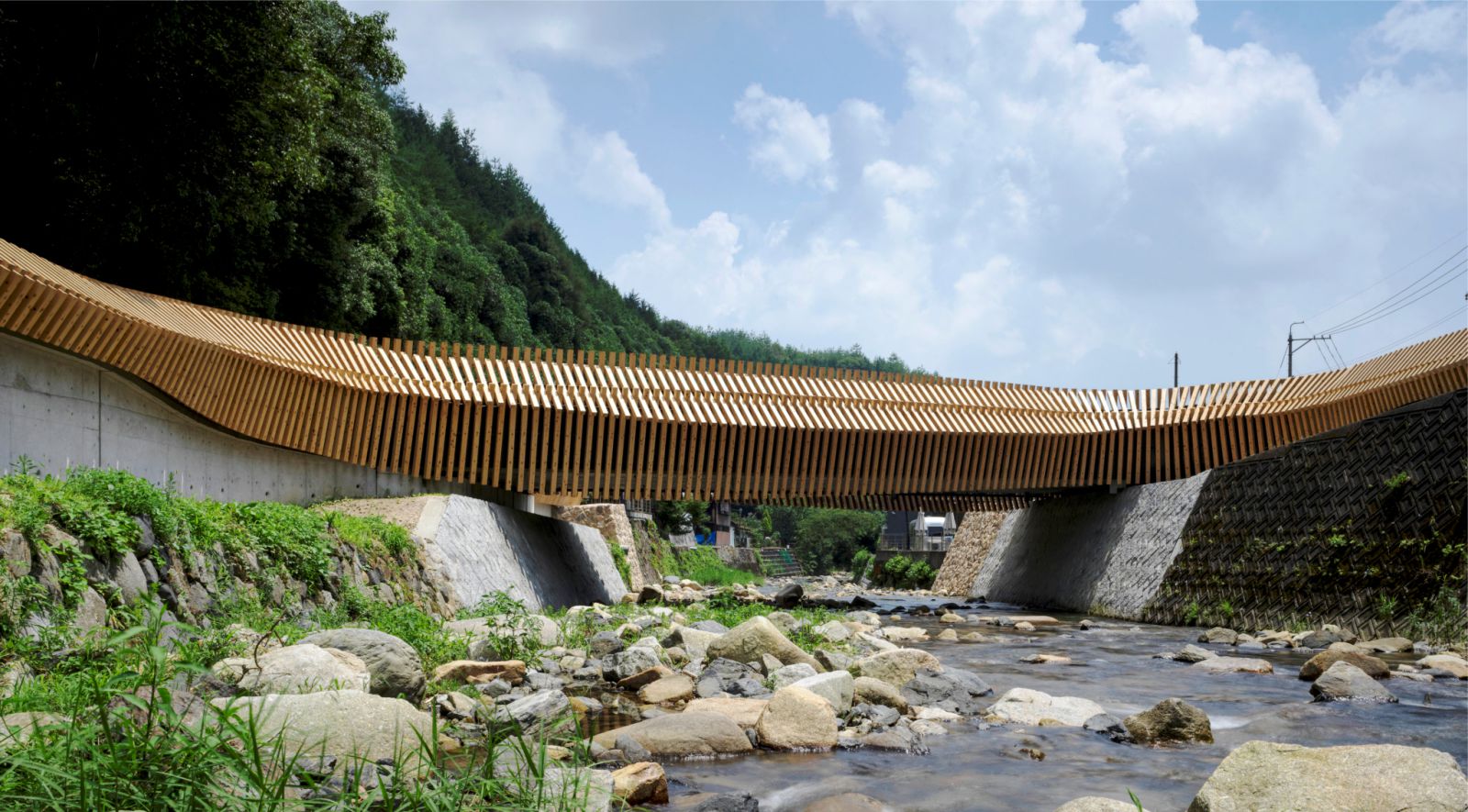
Kengo Kuma worked with his team at KKAA to create this architectural marvel.
Image courtesy of: AAS Architecture, photographed by: Katsumasa Tanaka
This year, Kengo Kuma, the renowned Japanese architect, debuted a bridge that he was commissioned to rebuild following the horrific floods that battered Japan in 2018. In the small city of Iwakuni, a location best known for the infamous Kintaikyo Bridge, the design for Kusugibashi merged traditional carpentry and computational design. The completed project is a symbol of renewal… just as the bridge was rebuilt, so will the city’s people move forward and thrive.

Up close, the 105 square balustrades made of Japanese cypress wood
Image courtesy of: Design Boom, photographed by: Katsumasa Tanaka
Kuma knew the importance of taking into consideration the risk of recurring natural disasters; as such, an RC frame was combined with 105 square Japanese cypress balustrades. The careful and deliberate arrangement of the cypress created a subtle curve that mimicked the mountain range in the background. The square pieces were ideal in creating a bridge perfect for human scale.
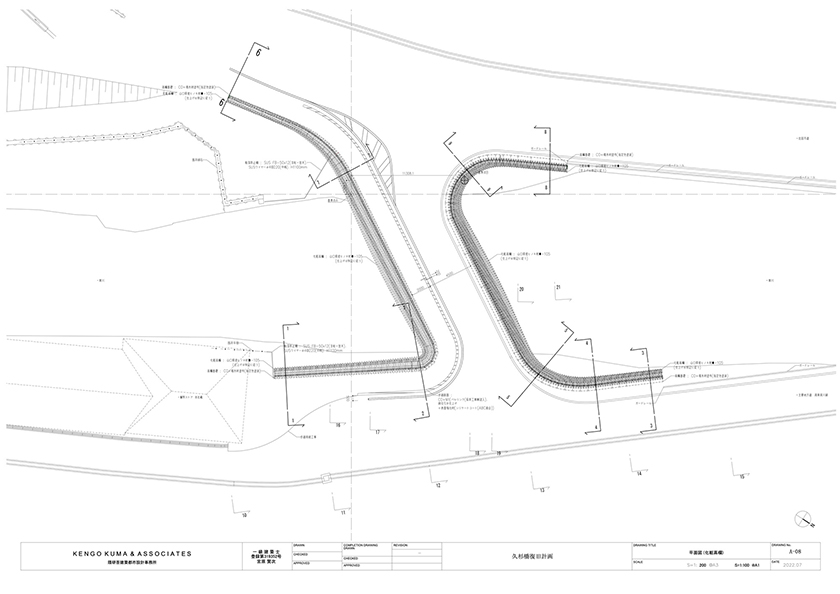
A rendering from KKAA.
Image courtesy of: Arch Daily
To further secure the bridge, the design team built it on a reinforced concrete frame that further secured the balustrades. The combination of Japanese carpentry techniques and advanced computational design technology ensued in a bridge design that is completely unfamiliar.
The Kusugibashi bridge is flanked by a “Dassai” brewery and a store that sells the Japanese sake that was created by the Asahi-Shuzo brewery. The brewery is well-known for its unique sake production; as an added bonus, they donated the wood for the bridge’s construction.
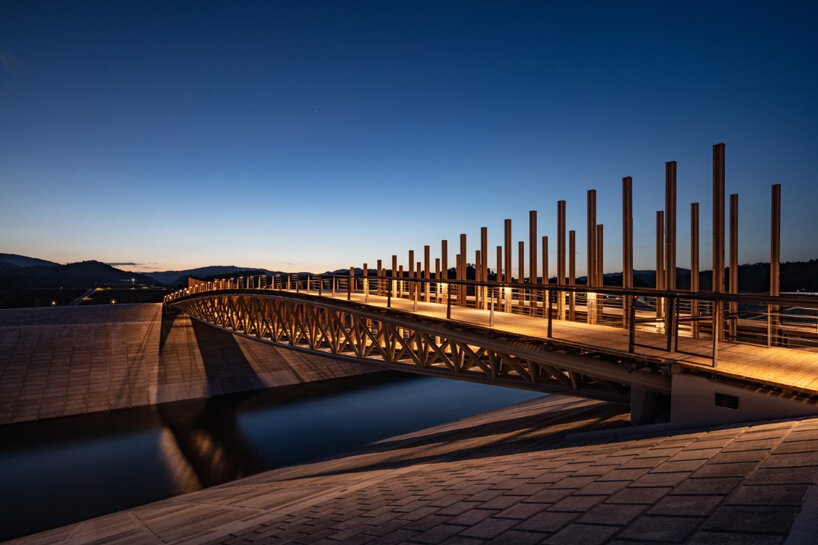
KKAA said (courtesy of Design Boom),” The bridge serves to connect in multiple ways.”
Image courtesy of: Design Boom, photographed by: Keishin Horikoshi and Kosuke Nakao
This was not Kuma’s first attempt into bridge construction . In 2013, Kengo Kuma and Associates was tasked with building Nakabasi pedestrian bridge. The bridge was a way to commemorate the March 2011 Tōhoku earthquake and tsunami that utterly devastated northeastern Japan. In total, 120,000 buildings were completely destroy and one million additional structures were partially affected.
The small coastal town of Minamisanriku was particularly devastated by the natural disaster. Working alongside Pacific Consultants, KKAA designed and constructed a 262-foot-long bridge named “Nakabashi.” The bridge is intended as a place of prayer and connects Minamisanriku Sun Sun Shopping Village to Minamisanriku Memorial Park.
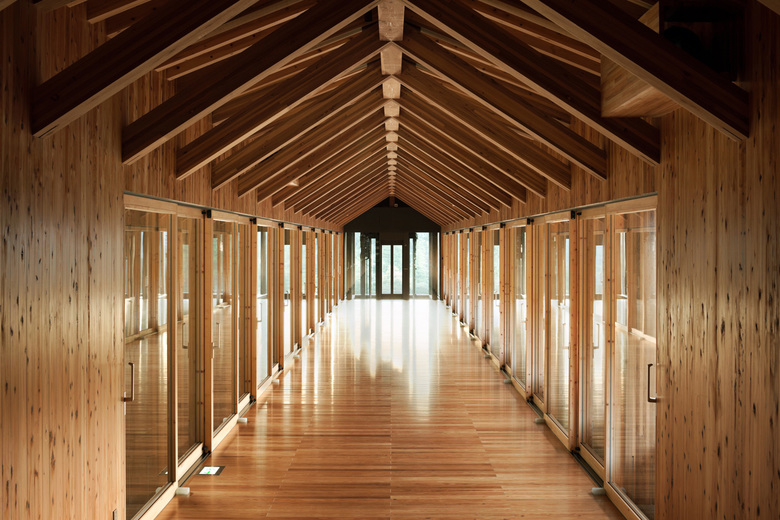
Homage to the past… the Yusuhara Wooden Bridge Museum.
Image courtesy of: World Architects, photographed by: Takumi Ota
In 2010, KKAA designed the Yushuhara Wooden Bridge Museum. The design was one that had been all but forgotten in Japan: a cantilever bridge. The general structure utilized an overlapping wooden system called Tokiyo; this style of design was traditionally used in Japanese temple architecture.
Courtesy of World Architects, “This represented an attempt to create new public architecture capable of bridging a wide range of issues, including the rejuvenation of regional culture, urban design, structure technology, and materials and traditional expression.”
